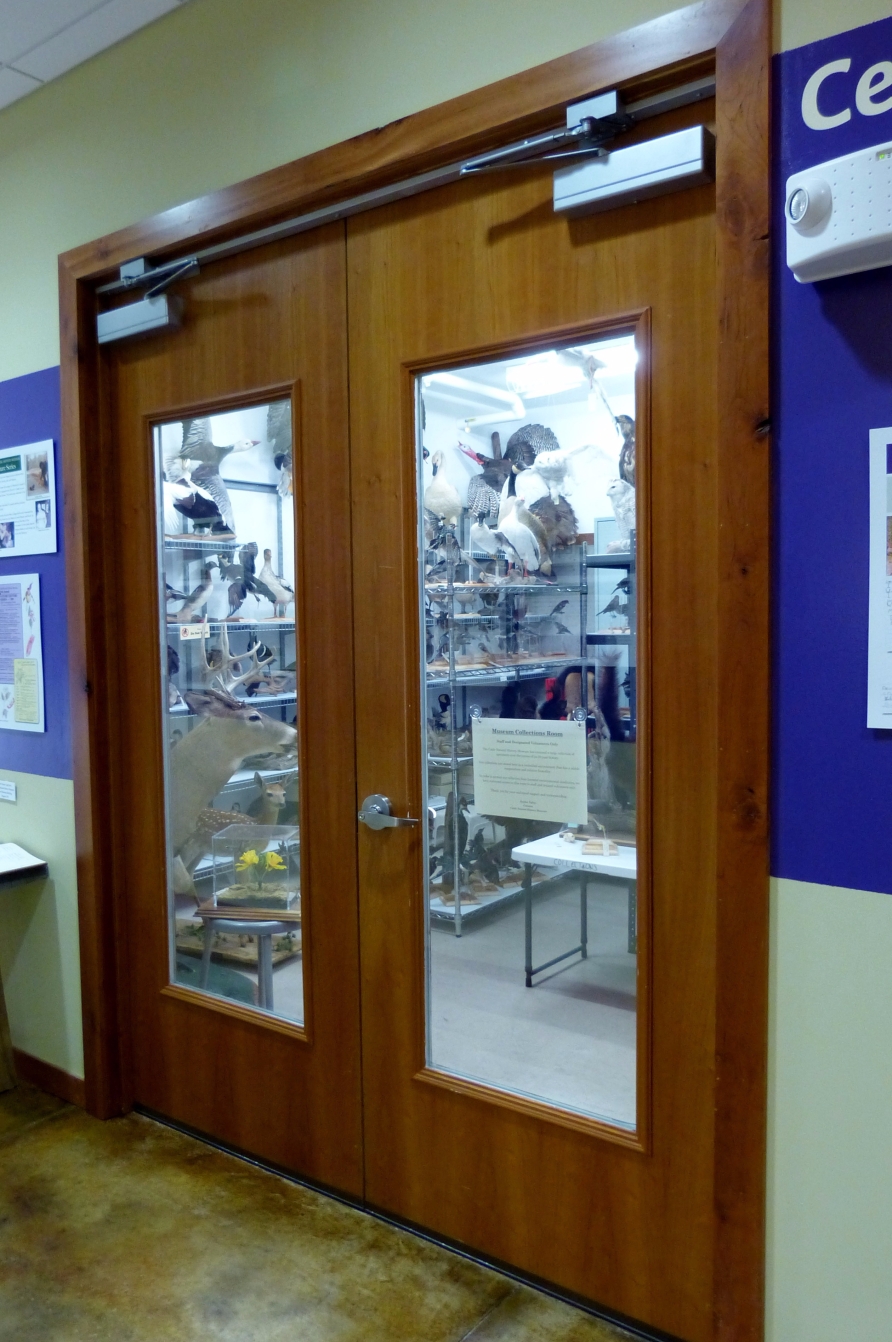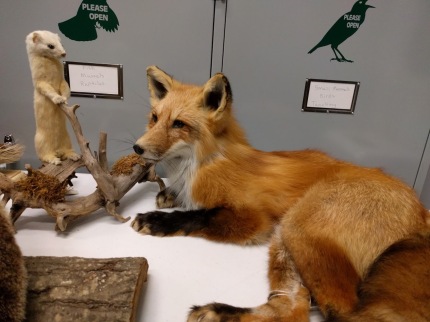
Sealed off from the world.
-with Kaylee Faltys, Curator
The Collections Room is something to be seen but not touched. Why is that? The Museum’s beloved specimens are behind locked doors not just to prevent them from escaping, but to protect them. Museum specimens are meant to last as long as possible. My job as Curator is to ensure that there is no unnecessary damage to a specimen and that the rate of decomposition remains as slow as possible. The specimens are dead but that doesn’t necessarily mean they don’t still have predators. 
A natural history museum specimen was once a living organism turned into an object for display or preserved scientific research (assume I will be talking about animals and not rock/mineral specimens for this article). Living animals are composed of organic molecules. Organic materials break down over time no matter the circumstances. This is called aging or decomposition. Many factors can enhance the rate of decomposition such as temperature, relative humidity, UV radiation, pests, and foreign organic substances. Those are the predators of museum specimens and the Curator serves as the specimen’s knight in shining armor.
The sealed doors on our Collections Room serve as a barrier to maintain a specialized atmosphere for housing of the specimens. That room has it’s own regulated climate and relative humidity settings with no exposure to UV radiation. Fluctuations in these “agents of deterioration” will cause the organic molecules and tissue of the specimens to become damaged and deteriorated over time. The door to the Collections Room is fitted with a weather strip on the bottom to prevent pests, such as insects, from entering the room. Pest infestations can become a nightmare as they will destroy entire mounts and collections.

The reason the public is not allowed into the Collections Room is because more traffic though these doors increases the risk of exposure to these damaging agents. Increased traffic also increases the risk of direct physical forces and foreign organic substances, such as the oils from wondering hands. When a specimen is exposed to un-gloved hands, oils from the skin contaminate the fur or skin of the mount and can also break/pull of hairs off a specimen. Extra people also means extra movement. One wrong turn can easily knock a mount off the shelf. This could spell disaster for both the mount and the person. Some of the specimens are old that they are preserved with carcinogenics, such as arsenic, that are not safe for human interaction without proper protection.
The locked doors of the Collections Room protect the specimens from people and “predators” as well as to protect the people from the specimens. Luckily, the Museum has wonderful glass doors allowing eyes to peer and minds to wander about the sealed world of natural history. But… I hear rumors that the animals come to life under the cloak of night? Leads me to wonder how much those doors really can contain…
–kf